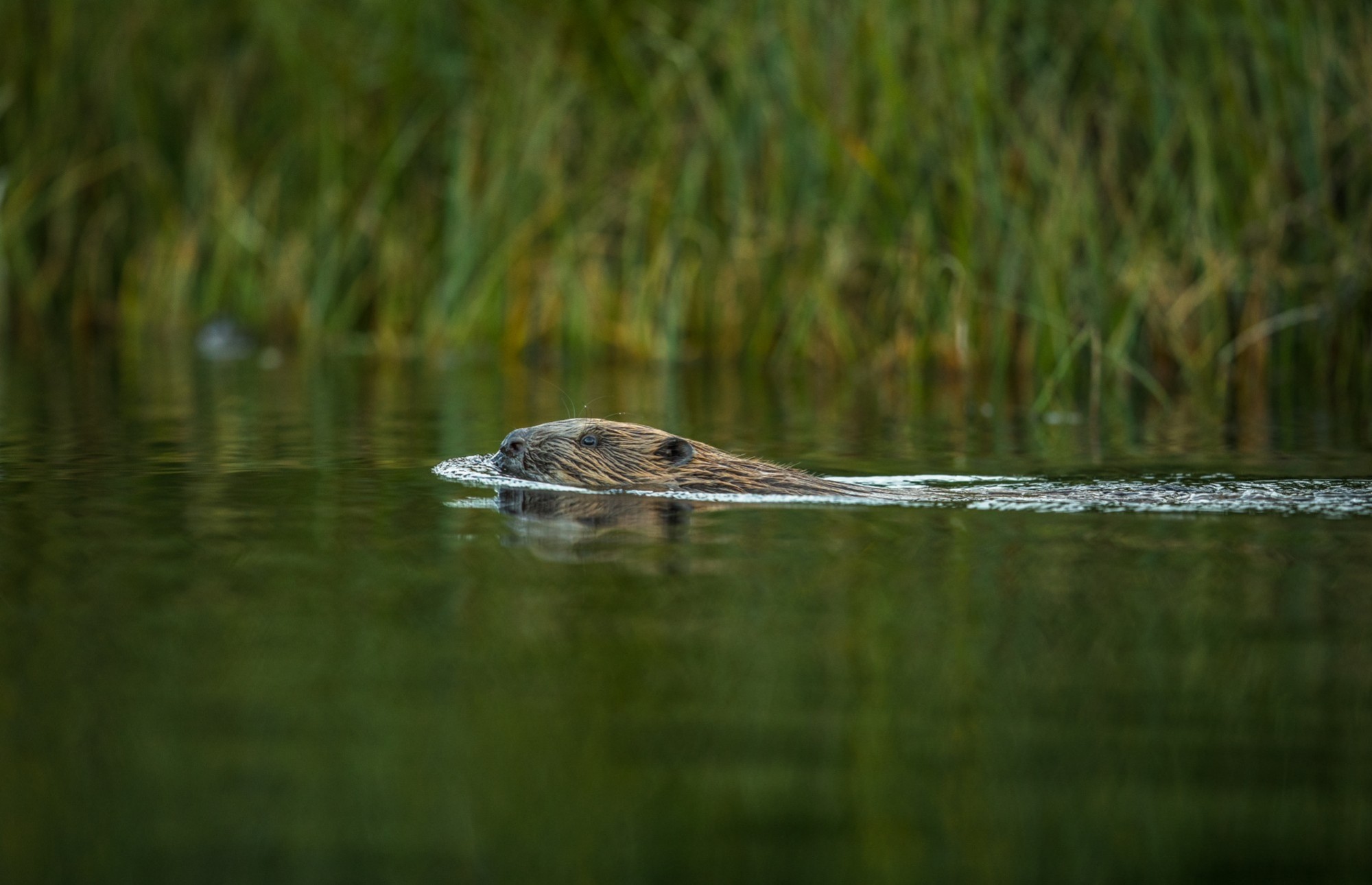Wildlife
Look and listen in every direction, you are never alone when you are out in nature.
Trees on the perimeter of our waterways are wildlife hotspots. Songbirds and woodpeckers flit tree to tree, singing and calling as they do. Hawks glide through the canopy and open sky in search of their next meal. On a still, warm, summer day, you may hear the loud buzz of an insect colony. Looking around you might spot the ovate brown ball of a bald faced hornets’ nest.
The water’s edge is full of activity. Look to where water meets land and you may spy a great blue heron stalking fish in quiet water. Raccoons will leave their prints on exposed sand bars after feasting on captured crayfish. Painted turtles will bask on fallen trees and quickly dive if they see something approaching.
A well-worn path leading through low growing vegetation could mean a number of things. If the soil up to the water’s edge is relatively dry, you might be looking at a deer trail, check for hoof prints. A wet, well-worn trail that seems to continue into the water may indicate a beaver has been at work. Look for tree trunks chewed into spiked ends and you’ll know a large aquatic rodent, the beaver, has been through.
Look for unexpected surface disturbance. A rhythmically moving stick may be just that, or it might be a northern water snake paddling to a new location. A brown furry head pulling green vegetation is likely a muskrat collecting lunch.
Peer into the water below you and you could see any number of fish darting in a synchronized school or lazily swimming alone. Observant individuals may spy the blur of a soft shell turtle swim beneath them.
Visiting the home of our native wildlife necessitates certain rules of etiquette and they depend on our ability to respect their homes. Whenever you are able to enjoy the outdoors and have the chance to observe our native wildlife, please:
- Maintain a respectful distance. The quieter and more still you are, the longer an animal may allow you to view it.
- Do not feed the wildlife or leave food for them to find in the water or on the riverbank. Some animals will sample and readily consume the food you offer them, but it’s just not good for them.
- Understand that babies just cry sometimes. Finding a baby animal does not mean that it needs help. They aren’t as good at hiding as their parents yet, so let them learn and leave them be.
- Pick up after yourself.This goes without saying. That said, don’t leave anything you wouldn’t want to find in your salad bowl.
We are surrounded by life when we enter the wild. Those wild places would not be without the animal inhabitants.
- Written by Freya Bernston; Preserves, and Programs Coordinator at Little River Wetland Project, Inc.
